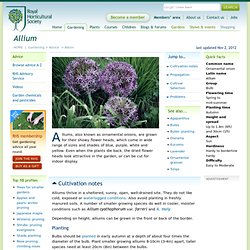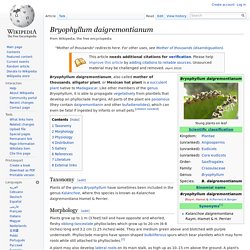

Agapanthus / RHS Gardening Advice. Agapanthus (African lily) are summer-flowering perennial plants, grown for their showy flowers, commonly in shades of blue and purple, but also white and pink.

They thrive in any well-drained, sunny position in the garden, or grow these beauties in containers. Cultivation notes Agapanthus are herbaceous perennials originating from Southern Africa. Both deciduous and evergreen, some have thick, strappy leaves and others grass-like foliage. They range from fully hardy to half hardy, with the evergreen varieties generally the most tender. Agapanthus thrives in fertile, well-drained, but moisture-retentive soil in full sun. Both deciduous plants and the more tender varieties with evergreen leaves are best protected over winter with a dry mulch of sand or straw. For the best flower displays, feed weekly or fortnightly with a balanced liquid feed during the growing season until flowers begin to show colour.
Container cultivation Propagation Agapanthus are easy to propagate by division. Links. Allium / RHS Gardening Advice. Alliums, also known as ornamental onions, are grown for their showy flower heads, which come in wide range of sizes and shades of blue, purple, white and yellow.

Even when the plants die back, the dried flower heads look attractive in the garden, or can be cut for indoor display. Cultivation notes Alliums thrive in a sheltered, sunny, open, well-drained site. They do not like cold, exposed or waterlogged conditions. Also avoid planting in freshly manured soils. Depending on height, alliums can be grown in the front or back of the border. Planting Bulbs should be planted in early autumn at a depth of about four times the diameter of the bulb.
On poorer soils, apply a balanced fertiliser in spring such as Growmore. Containers Most alliums will do well in deep pots. Aftercare The often straggly leaves begin to die down at flowering and for this reason alliums are best planted so they are masked behind the foliage of other plants. Propagation Many allium species produce offsets. Problems. Kalanchoe daigremontiana. Bryophyllum daigremontianum, also called mother of thousands, alligator plant, or Mexican hat plant is a succulent plant native to Madagascar.

Like other members of the genus Bryophyllum, it is able to propagate vegetatively from plantlets that develop on phylloclade margins. All parts of the plant are poisonous (they contain daigremontianin and other bufadienolides), which can even be fatal if ingested by infants or small pets. [citation needed] Taxonomy[edit] Plants of the genus Bryophyllum have sometimes been included in the genus Kalanchoe, where this species is known as Kalanchoe daigremontiana Hamet & Perrier. Morphology[edit] Plants grow up to 1 m (3 feet) tall and have opposite and whorled, fleshy oblong-lanceolate phylloclades which grow up to 20 cm (6-8 inches) long and 3.2 cm (1.25 inches) wide. A plant may also develop lateral roots on its main stalk, as high up as 10–15 cm above the ground.
Physiology[edit] Distribution[edit] Gallery[edit] References[edit] Literature[edit] How 'Mother Of Thousands' Makes Baby Plants. New research shows how the houseplant "mother of thousands" (Kalanchoe diagremontiana) makes the tiny plantlets that drop from the edges of its leaves.

Having lost the ability to make viable seeds, the plant has shifted some of the processes that make seeds to the leaves, said Neelima Sinha, professor of plant biology at UC Davis. Many plants reproduce by throwing out long shoots or runners that can grow into new plants. But mother of thousands goes further: the plantlets are complete miniature plants that become disconnected from the mother plant's circulatory system and drop off, allowing them to spread rapidly and effectively.
The houseplant has lost the ability to make viable seeds and only reproduces through plantlets. Helena Garcês, a graduate student in Sinha's laboratory, Sinha and colleagues looked at two genes, STM and LEC, in mother of thousands and close relatives, some of which make seeds instead of plantlets. Expression of STM in leaves was essential for making plantlets.